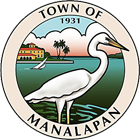Cross-Connection Control Program Overview
The Manalapan Water Department delivers safe, high-quality drinking water everyday. To continue to protect the public health and keep the water system safe from contaminants and pollutants, we are required by the Environmental Protection Agency, the Florida Department of Environmental Protection, and the Manalapan Municipal Code to devise and maintain a cross-connection control program.
Water department employees have conducted a survey of all commercial, residential, multi-story, and public authority buildings served by Manalapan’s water system to detect actual & potential cross connections and make recommendations for the installation of backflow prevention devices or assemblies where necessary. This will help ensure that contaminated or polluted water cannot backflow into clean drinking water.
What is a Cross-Connection Control Program?
This is a combined cooperative effort between plumbing and health officials, municipalities, water utilities, and property owners to establish and administer guidelines for controlling cross-connections and ensuring enforcement so that the public drinking water supply is protected both in the town water distribution system and within buildings to the point of use.
What is a cross-connection?
A cross-connection is a direct or potential connection between any part of the public water supply system and a source of contamination or pollution. The most common form of cross-connection is a garden hose, which is easily connected to the public water supply system and can be used to apply a variety of potentially dangerous substances, including chemicals and fertilizer. Other common cross-connections include dishwashers, toilets, pressure washers, boilers, pools, and lawn sprinkler systems.
How does contamination occur?
Water normally flows in one direction, from the public water system through the customer’s cold or hot water plumbing system to a faucet or other plumbing fixture. Under certain conditions, water can flow in the reverse direction. This is known as backflow, and it occurs when back-siphonage or backpressure is created in a water line.
Back-siphonage may occur when there is a drop in the supply pressure of the water distribution system. This can be caused by a water line break, water main repair, or during a rapid withdrawal of water from a fire hydrant. This creates a vacuum, which may pull or siphon contaminants or pollutants into the drinking water supply.
Backpressure may be created when a source of pressure, such as a pump, boiler, or other item creates a pressure greater than that supplied from the water distribution system; this may force water to reverse direction.
Our Cross-Connection Program will consist of the following:
Cross-Connection Survey
All residential, commercial, and public authority facilities’ plumbing systems will be surveyed and inspected to determine if cross-connections exist and appropriate corrective actions will be outlined if applicable.
Installation of protective devices
Where known unprotected cross-connections are identified, property owners will be required to install backflow prevention devices or assemblies. The type of device will be determined by the water utility.
Potential hazards, depending upon the degree of risk, will also be required to install backflow prevention devices or assemblies.
Annual testing
All backflow prevention assemblies will be tested once a year at the property owner’s expense. In addition, an annual administrative fee of $75.00 will be charged by the town for each device.
The Manalapan Water Department is currently in compliance with all federal and state regulations regarding monitoring and water quality. New legislation is constantly being passed that imposes more stringent regulations on public water systems. The ultimate purpose is, of course, to protect the consumer from possible contaminants and health hazards. We hope you understand that even though the cross control program will cost the customer some money, the extra insurance that the program affords in keeping your water safe will make it well worth it.
